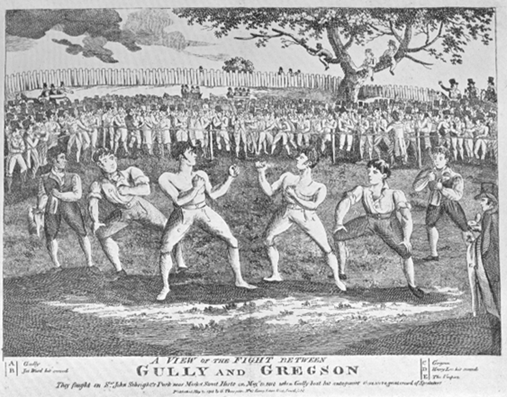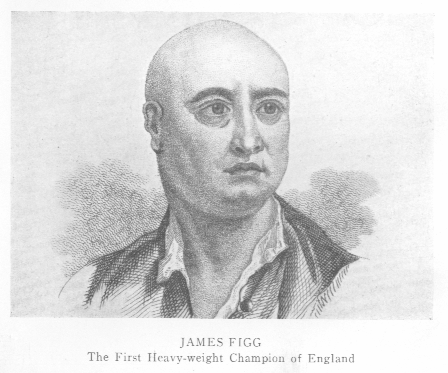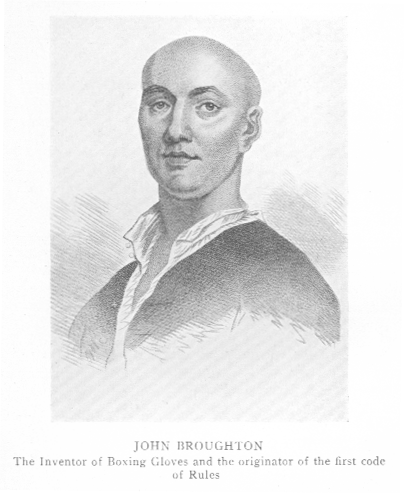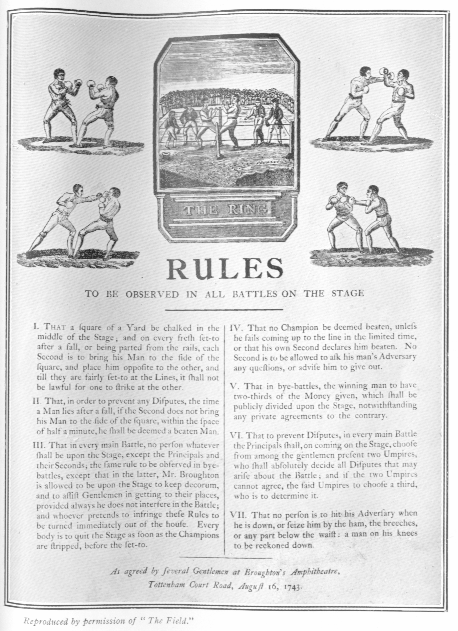Follow along as a duel for your pride unfolds before you...
Learn about unarmed combatives below:
In the Eighteenth Century, boxing and other unarmed
combative methods became immensely popular in England. “The Prize-Ring served its turn. For nearly a hundred years—that is, roughly,
from 1740 to 1840—it was a genuine expression of English life.” (Lynch xxxi)
“Let me conclude with a general Call to the true British Spirit, which, like
purest Gold, ha no Allay. How readily would I encourage it, through the most
threatening Dangers, or feverest of Pains, or Pledge of Life itself! Let us
imitate the glorious Example we enjoy, in the saving Offspring of our King, and
blessed Guardian of our Country. Him let us follow with our keen Swords, and
warm glowing Hearts, in Defense of our just Cause, and Preservation of
Britain's Honour.” (Godfrey’s Treatise)
What began as a way to settle disputes for the lower classes
spread to a form of entertainment and training that the entire nation supported
and practiced. Boxing, or more
accurately called pugilism during this time, was a violent and cruel
sport. Men would face off, and fight
one another using a variety of rough methods.
For example, in a typical match,
“If the chance presented itself, one fighter might catch hold of his
opponent and toss him to the ground or floor, then fall upon him if he failing
instantly to roll away. It was
considered manly and proper to kick a man when he was down—the work “purring”
was employed to describe this activity—and eye-gouging was common practice with
the fighters and hugely enjoyed by the spectators. The use of fists was relatively incidental.” (Fleischer 6)

It was because of notable boxers such as James Figg, John
Broughton, John Jackson, and Daniel Mendoza that boxing found such a growing
popularity in eighteenth century England.
James Figg was the first champion of England, and his reign
ran from 1719-1730. He was also a
notable fencer and cudgeller. He had
two schools that he operated, Figg’s School of Arms where the nobility
attended, and his Amphitheatre that was visited by people of all classes. At both places, a man could learn a variety
of Manly defenses.

John Broughton was the champion of England from 1738 to
1750. He has been named, “The Father of
the English School of Pugilism.” “It
was his skill and intelligence that gave form to the sport and fixed its
direction. Broughton was an advocate of
fair play.” (Fleischer 8)

Broughton taught other men specifically how to box. He discovered the use of mufflers, or padded
gloves, for boxers to use during practices and sparring matches. The mufflers helped black eyes, broken jaws,
and bloody noses. (Fleischer) It wasn’t until the 1900’s that all boxers
were required to wear gloves in matches.
Broughtons most notable achievement was the publication of his rules for
boxing, which helped to create boxing as a science, and not as a rough and wild
sport. These rules made the fights more
fair and safer.

John Jackson was not a boxer for very long. He was champion of England for only one
year, in 1795. He was, however, a
favorite boxer, both with the aristocrats and the more humble. (Wignall 63). He made a name for himself in teaching others how to box. “His rooms in Bond Street were for years the
resort of the élite of the fashionable world.
It was no uncommon thing to see gathered there men who had distinguished
themselves in Parliament, at the Bar, and in the Field, while it is recorded
that noblemen and gentlemen of the highest ran, looked upon it as an honor to
don the gloves with Jackson.” (Wignall 64)
